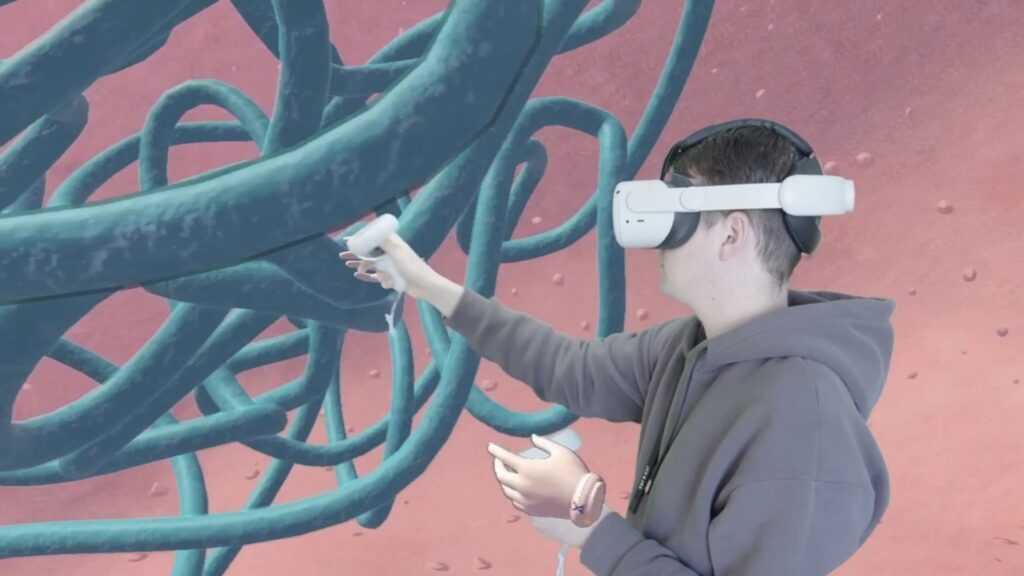

Virtual reality (VR) has transcended its role as a futuristic concept to become a powerful tool in both entertainment and education. This article explores how VR education apps are transforming K-12 learning experiences across various subjects, with a special focus on STEM education.
Traditional education, while valuable, often struggles to provide immersive, hands-on experiences for students, especially in subjects that deal with abstract concepts or potentially dangerous experiments. This is where VR education software steps in, offering unique advantages:
Many VR education games incorporate gamification elements, which research has shown to significantly boost engagement and learning outcomes. A study published in the Journal of Educational Technology & Society found that gamified VR learning experiences resulted in a 23% increase in student engagement and a 20% improvement in information retention compared to traditional methods.
How can VR be used in education to enhance learning experiences? Here are some practical applications:
Subject: STEM
XReady Lab STEM Eduverse offers immersive STEM learning experiences through virtual experiments and interactive tutorials.
🏫 School Utility:
💵 Pricing: 1 year license for 2 subjects (biology + physics) is starting from $300/headset
Subjects: Japanese, Korean, Chinese, Spanish, French, German, Italian
Immersive language learning through realistic virtual scenarios and mini-games.
🏫 School Utility:
💵 Pricing: $14.99 with free trial
Subject: Cognitive Skills
Neuroscientist-designed mini-games for cognitive skill development.
🏫 School Utility:
💵 Pricing: Free
Subject: History
An emotional journey through Anne Frank’s hiding place during World War II.
🏫 School Utility:
💵 Pricing: Free
Subjects: Art, Design
Create interactive 3D scenes, fostering creativity and collaboration.
🏫 School Utility:
💵 Pricing: Free

A practical lesson in VR goes beyond traditional hands-on activities. It’s an immersive experience where students can interact with virtual objects and environments, conduct experiments, and solve problems in ways that might be impossible in a physical classroom. This addresses the question, “What are some practical reasons for learners to participate in the lesson?” by offering engaging, interactive experiences that make abstract concepts concrete and memorable.
Integrating VR into science lesson plans can transform how students learn complex topics. A science lesson plan template incorporating VR might include:
This structure ensures that VR enhances rather than replaces traditional teaching methods.
As a leading VR education company, we at XReady Lab specialize in creating immersive STEM experiences. Our STEM Eduverse offers:
We invite educators to explore how our VR education services can enhance their science experiment lesson plans. Visit our demo request page to experience our free VR education apps firsthand.
At XReady Lab, we believe VR is not just a technological novelty but a powerful educational tool that significantly enhances learning experiences across various subjects. By offering immersive, interactive, and safe environments for exploration and experimentation, we’re setting new standards for what a school lesson can be.
For educators looking to integrate VR into their teaching, our apps offer a range of options tailored specifically for STEM subjects. As VR technology continues to evolve, we’re committed to developing even more innovative applications in education, further bridging the gap between theoretical knowledge and practical experience.
We emphasize that our goal in incorporating VR into education is not to replace traditional methods but to enhance them. We’re dedicated to creating more engaging, effective, and memorable learning experiences for students of all ages through our cutting-edge VR solutions.
Frequently Asked
We prodive VR biology, VR physics, and VR chemistry simulations. Please, check our catalog.
Please, fill the form to get demo labs for free.
Please contact our customer support service at support@xreadylab.com or book a call with the team to find out the conditions and book the VR class set up at your school.
Subscription to XReady Lab interactive VR labs. If you are a school, then you are also given access to the VR classroom system. VR class system helps you easily launch VR lessons for a large number of students, follow the experience of each student, as well as customise the content without developers.
We adhere to the world’s generally accepted recommendations and research. Our products are suitable for children from 12 years old.